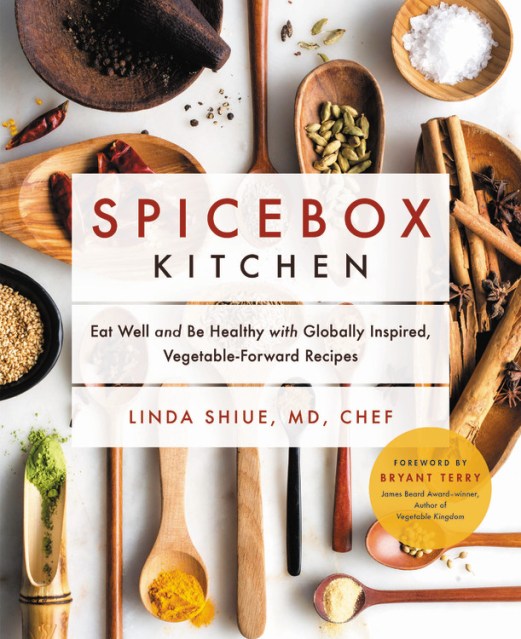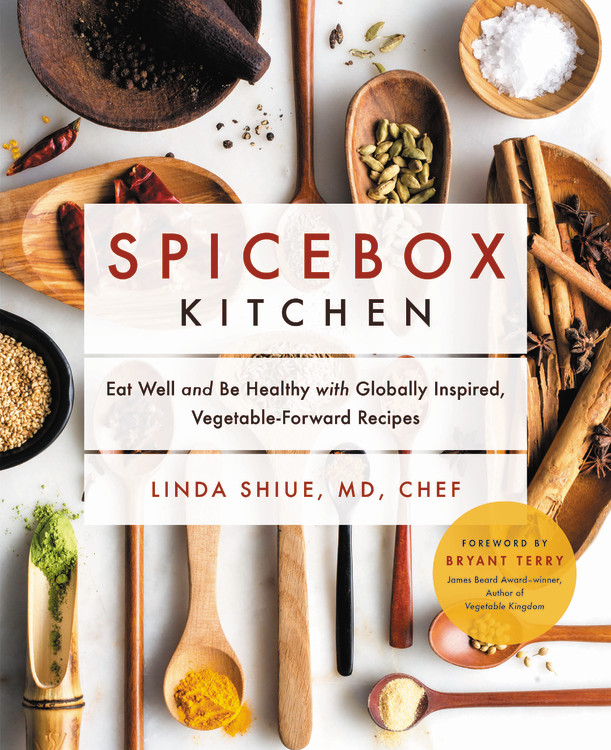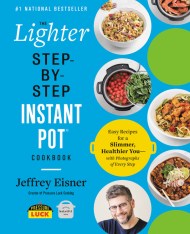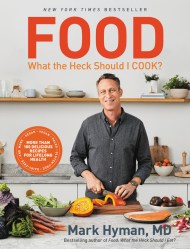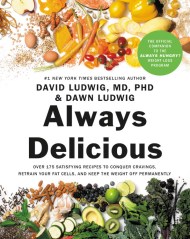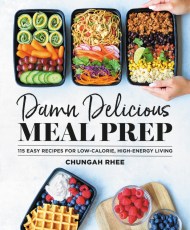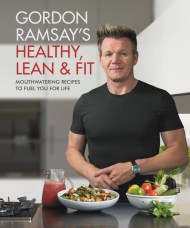Promotion
Free shipping on orders $45+ Shop Now.
Spicebox Kitchen
Eat Well and Be Healthy with Globally Inspired, Vegetable-Forward Recipes
Contributors
Foreword by Bryant Terry
Formats and Prices
Price
$32.00Price
$40.00 CADFormat
Format:
- Hardcover $32.00 $40.00 CAD
- ebook $15.99 $20.99 CAD
This item is a preorder. Your payment method will be charged immediately, and the product is expected to ship on or around March 16, 2021. This date is subject to change due to shipping delays beyond our control.
Also available from:
2022 Gold Award Winner, Nautilus Book Awards
2022 IACP Cookbook Awards Finalist
A renowned chef and physician shares her secrets to a healthy life in this cookbook filled with healthy recipes that will fuel and energize your body and mind.
"I like to think of a spicebox as the cook's equivalent of a doctor's bag–containing the essential tools to use in the art of cooking. Learning to use spices is the best way to add interest and vibrancy to simple home cooking."
—from the Introduction
In her first cookbook, chef and physician Linda Shiue puts the phrase "let food be thy medicine" to the test. With 175 vegetarian and pescatarian recipes curated from her own kitchen, Dr. Shiue takes you on a journey of vibrant, fresh flavors through a range of spices from amchar masala to za'atar. With a comprehensive "Healthy Cooking 101" chapter, lists of the healthiest ingredients out there, and tips for prevention, Spicebox Kitchen is a culinary wellness trip you can take in your own kitchen.
2022 IACP Cookbook Awards Finalist
A renowned chef and physician shares her secrets to a healthy life in this cookbook filled with healthy recipes that will fuel and energize your body and mind.
"I like to think of a spicebox as the cook's equivalent of a doctor's bag–containing the essential tools to use in the art of cooking. Learning to use spices is the best way to add interest and vibrancy to simple home cooking."
—from the Introduction
In her first cookbook, chef and physician Linda Shiue puts the phrase "let food be thy medicine" to the test. With 175 vegetarian and pescatarian recipes curated from her own kitchen, Dr. Shiue takes you on a journey of vibrant, fresh flavors through a range of spices from amchar masala to za'atar. With a comprehensive "Healthy Cooking 101" chapter, lists of the healthiest ingredients out there, and tips for prevention, Spicebox Kitchen is a culinary wellness trip you can take in your own kitchen.
Genre:
-
"Dr. Shiue's recipes offer creative twists on traditional favorites, in some cases gently nudging them in more a vegetable-forward direction, which often actually means getting closer to their roots. I'm excited for you to begin cooking the wide-ranging recipes in this book, and I imagine you will learn a lot from the comprehensive and user-friendly overview of spices and healthy staple ingredients that form the basis of the dishes."from the foreword by Bryant Terry, James Beard Award winner, author of Vegetable Kingdom
-
"Dr. Linda Shiue shows us what a holistic relationship between food and medicine looks, and, most importantly feels, like. Using our spiceboxes as veritable medicine cabinets, Dr. Shiue teaches us that healthy is ours to define and pleasure is vital to our wellbeing."Julia Turshen, bestselling cookbook author and founder of Equity at the Table (EATT)
-
'"I used to think Linda Shiue loved to cook because it took her away from her work as a doctor; how much more thrilling is it that she brings that love to her work? Through terrific, wide-ranging recipes and a no-stress approach, she shares a world of flavor to nourish your self and your body. And I could live on her spiced coconut rice alone...though I guess no doctor would recommend that."Francis Lam, host, The Splendid Table
-
"Linda's food is exciting, new and riotously flavorful--it's Ottolenghi meets Bayless with a dash of Ming Tsai. I want to eat the Shakshuka today for breakfast and the Chilaquiles Verde tomorrow. A cookbook of culinary medicine never tasted so good!"John La Puma, MD, New York Times best-selling author of ChefMD's Big Book of Culinary Medicine
-
"In a time when wellness has taken over food writing as a new guise for the same-old diet culture, Dr. Shiue's science-based take on eating well and healthfully is so refreshing. Even before you get to the wonderful recipes, it's worth reading the intro in which she patiently dismantles myths around nutrition and taste and truly teaches the fundamentals of cooking nearly every ingredient under the sun, with angles fit for both beginners and experts. The book is rich with ideas and, I think, achieves its goal of making good eating unintimidating and accessible to all kinds of eaters."Soleil Ho, restaurant critic, San Francisco Chronicle
-
"[N]ot only is Linda Shiue a well-regarded medical doctor, she is also a great chef and cooking teacher, who knows how to nurture and heal with good, nutritious food. This cookbook encourages you to explore new spices and cuisines you might not have tried before. As I read through the book, I was so inspired that I immediately made a b-line for my kitchen."Joanne Weir, chef, PBS cooking show host, cookbook author
-
"Looking to spice up your home cooking? In Spicebox Kitchen Dr. Linda Shiue brings a world of delicious flavors with accessible recipes full of discoveries from far and wide to your table. Linda's easy instruction, creative mind, and sound nutritional sensibilities gained over years as a physician and passionate diner transform your cooking and you into shining stars of deliciousness. Recipes from around the world make it easy for both novice and professional to cook with hunger and pride. Get ready to stain these pages as you create new favorites from your kitchen and delight your family and friends."Suvir Saran, author of Indian Home Cooking, Masala Farm, Instamatic and owner of The House of Celeste in New Delhi, India
-
"Spicebox Kitchen captures the essence of how great taste and nutrition nourish both body and soul. The ultimate recipe for optimal health and big flavor."Rebecca Katz, author of The Cancer Fighting Kitchen
-
"What if your personal physician could think like a chef and advise you about recipes you should eat- and cook-to optimize your health and the health of your family? What if your favorite chef was sufficiently trained as healthcare professional capable of sharing recipes- from multiple culinary traditions- that are unapologetically delicious while also being healthy, affordable and easy to make? Both would want to read and savor this extraordinary book by Linda Shiue, one of the most talented, dual trained, MD-Chefs in the world today!"David Eisenberg, MD, director, culinary nutrition, Harvard T.H. Chan School of Public Health
-
"Wow! This book will change your health. My friend, physician and Chef Linda Shiue, MD has traveled the world researching these recipes and it shows. Incredible flavors you can't imagine are waiting for you inside, along with the sage advice of an experienced doctor on what to eat."Drew Ramsey, MD, assistant clinical professor of psychiatry, Columbia University
-
"From aleppo to za'atar, coriander and cumin, fennel and fenugreek, I know firsthand how powerful spices can be. Spicebox Kitchen is a great resource for adding these spices--and many more--to your own kitchen. Elevate your everyday meals while taking care of yourself."Lior Lev Sercarz, chef and owner of La Boîte and author of Mastering Spice
- On Sale
- Mar 16, 2021
- Page Count
- 352 pages
- Publisher
- Hachette Go
- ISBN-13
- 9780738286020
Newsletter Signup
By clicking ‘Sign Up,’ I acknowledge that I have read and agree to Hachette Book Group’s Privacy Policy and Terms of Use
